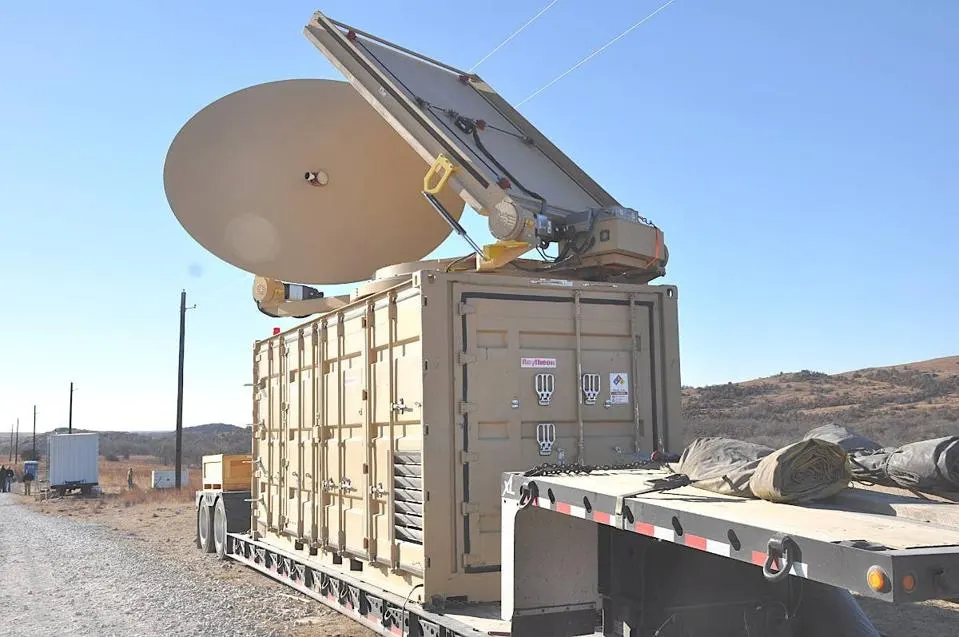The Raytheon DEFEND system, which is a high-power microwave (HPM) air defense system, operates using microwaves to disrupt and neutralize electronic systems in airborne threats like drones and missiles. Here are some key details about the power and wavelength aspects of such systems:
- Power Output: The exact power output of the DEFEND system is not publicly disclosed for security reasons. However, in general, high-power microwave systems can generate substantial power levels, typically ranging from tens to hundreds of kilowatts. This power level is enough to effectively disrupt or damage electronic components at a distance.
- Wavelength/Frequency: Microwaves used in such systems typically fall within the range of 1 GHz (gigahertz) to 3 GHz, which corresponds to wavelengths of about 30 centimeters (0.3 meters) to 10 centimeters (0.1 meters). This frequency range is effective for interfering with a wide range of electronic systems.
- Operational Range: The effective range of HPM systems like DEFEND is classified, but it’s worth noting that the range is influenced by factors like the power of the microwave source, the efficiency of the antenna, atmospheric conditions, and the vulnerability of the target electronics. Generally, HPM weapons are considered to be line-of-sight systems, with their range limited as the Earth curves away from the transmission source.
- Technical Challenges: One of the significant challenges in developing HPM systems like DEFEND is to pack enough power into a compact and deployable system. This involves not just generating the microwave energy but also effectively focusing and directing it at a target, which requires sophisticated antenna and guidance systems.
In an era where technological advancements redefine warfare, Raytheon’s latest offering, the DEFEND system, emerges as a game-changer in air defense. This post delves into the world of directed energy weapons, spotlighting how Raytheon’s high-power microwave (HPM) system could revolutionize our approach to aerial threats.
Related post: Both 5G Network Frequency and Active Denial Crowd Control Systems Use Millimeter Wave Microwave Technology
The Rising Need for Advanced Defense Systems
The recent strike on a U.S. container ship by a Houthi-fired missile in the Red Sea underscores an urgent need for more effective defense solutions. It’s in this context that Raytheon’s DEFEND (Directed Energy Front-Line Electromagnetic Neutralization and Defeat) system steps in, promising to redefine air defense as we know it.
Forbes Story: Why Shoot Down Houthi Missiles When We Could Microwave Them?
What is DEFEND?
DEFEND leverages the power of microwaves to neutralize airborne threats like drones and missiles. By emitting high-power microwave bursts, it incapacitates the electronics of these threats, rendering them harmless. This leap from experimental predecessors like CHIMERA and THOR to DEFEND marks a significant advancement in defense technology.
The Mechanics of DEFEND
At the heart of DEFEND’s operation is its ability to disrupt the intricate electronics of modern aerial threats swiftly and efficiently. Unlike traditional defense mechanisms, DEFEND’s microwave bursts travel at light speed, offering unmatched responsiveness against even the fastest of missiles.
A Tactical Edge in Air Defense
DEFEND isn’t just about neutralizing threats; it’s about doing so economically and effectively. Its ‘unlimited magazine’ characteristic, thanks to the reliance on microwave energy, presents a cost-efficient alternative to expensive missile interceptors. This aspect is particularly advantageous in countering the swarms of modestly-priced drones and missiles that have become prevalent in modern conflicts.
On the Road to Deployment
With field testing scheduled by the U.S. Air Force Research Laboratory and other defense entities, DEFEND is poised to become an integral part of military infrastructure. This system’s integration into existing defense networks is expected to enhance their efficiency and efficacy dramatically.
Navigating Challenges and Future Prospects
Despite its potential, DEFEND faces challenges, particularly in minimizing its size, weight, and power requirements. These improvements are crucial for broader deployment, especially in frontline scenarios. Furthermore, as a line-of-sight weapon, DEFEND’s effectiveness is geographically bound, posing strategic challenges in deployment.
Ethical and Strategic Dilemmas
While DEFEND’s capabilities are impressive, they also raise ethical concerns, particularly regarding its potential use against ground targets, including civilian infrastructures. Balancing the offensive and defensive aspects of such powerful technology will be crucial in shaping its role in future warfare.
It’s important to recognize that much of the specific information about the DEFEND system’s capabilities, including its precise power output and operational range, remains classified for strategic and security reasons. The general details provided here give an overview of what such systems are capable of, based on publicly available information about high-power microwave technology.
Wrapping Up
Raytheon’s DEFEND system stands at the forefront of a new era in defense technology, offering a promising solution to modern and emerging aerial threats. Its development and deployment will undoubtedly have a significant impact on military strategy and global security. As we witness this technological evolution, it’s crucial to consider the broader implications of such advancements in warfare.








